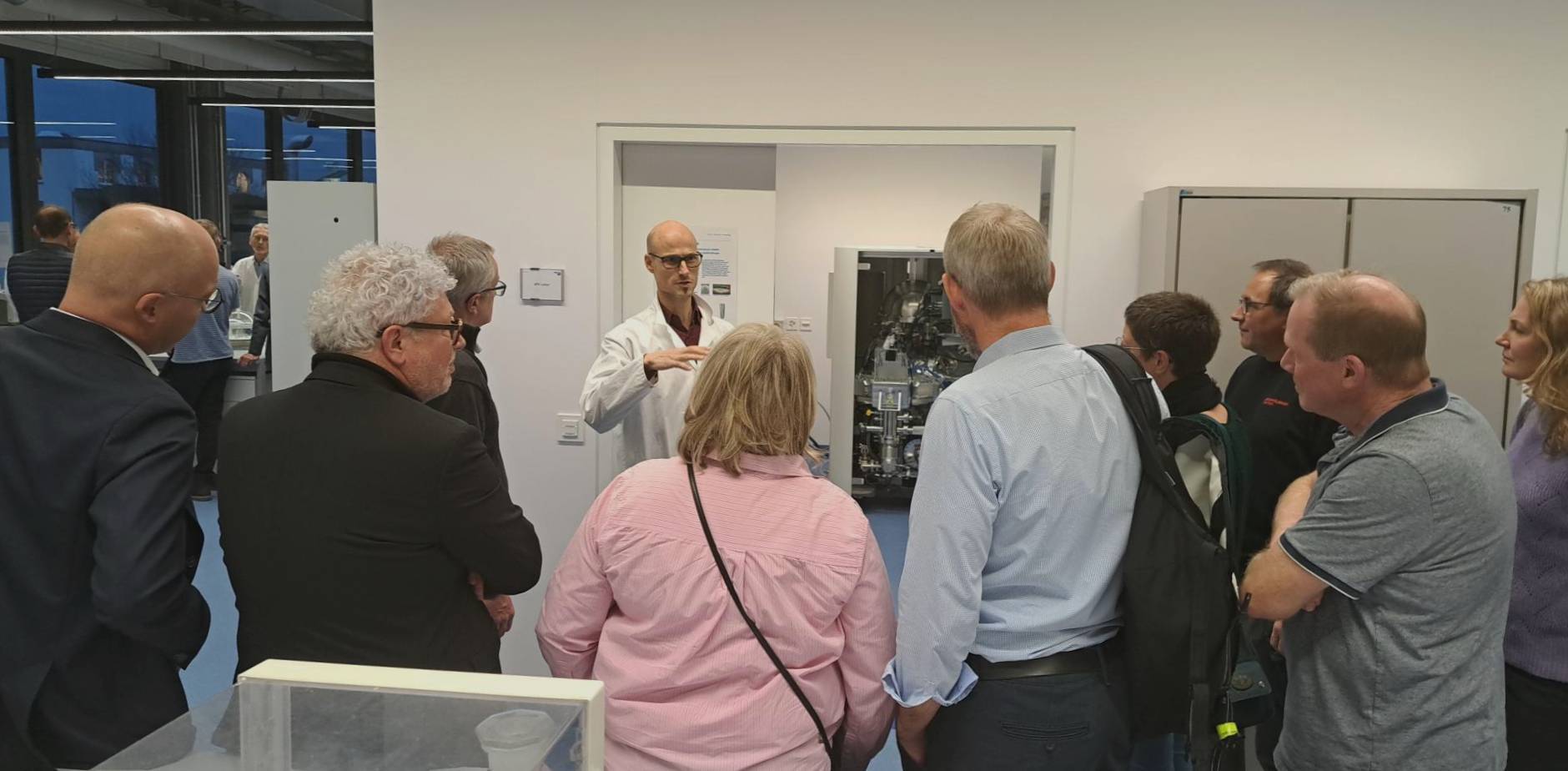RMS Foundation
Robert Mathys-Strasse 1
2544 Bettlach
Switzerland
Phone +41 32 644 2000
Our optical 3D profilometer allows for non-contact determination of the surface structure and roughness of products of all kinds. The versatile combination device enables interferometry (both phase shift and white light interferometry), confocal microscopy, and focus variation. In combination with the piezo drive for height adjustment and an active vibration damping stage, interferometry can achieve z-resolutions in the sub-nanometer range. Even very rough samples can be analyzed with confocal microscopy, and the shape of a rough sample, such as the thread shape of a dental implant, can be analyzed quickly and easily using focus variation. Thanks to the 1 m long column for the measuring head, even very large samples can be analyzed.
If the lateral resolution that can be achieved with optical systems is not sufficient, the topography can be determined using a Scanning Electron Microscope (SEM). Here, images are taken with two different viewing angles and the topography is determined semi-quantitatively. With SEM, lateral resolutions down to the deep nanometer range can be achieved.
Whenever possible, we carry out our testing services in accordance with or based on these international standards:
Measuring range of the method and options are:
Suitable samples are solids, foils etc., from highly polished to very rough, with a reflectivity of 0.05 to 100 %.
Thanks to our 1 m long column for the measuring head, larger samples up to approx. 60 × 60 × 60 cm and weighing up to 10 kg can also be examined. The maximum height difference that can be imaged is 37 mm.
Yes, topography and roughness measurements are validated and accredited according to ISO/IEC 17025.
Since 1995, the services of our materials testing laboratory have been accredited according to ISO/IEC 17025. Our QM system is ISO 9001 certified.
Here you will find our latest blog posts.

RMS Foundation
Robert Mathys-Strasse 1
2544 Bettlach
Switzerland
Phone +41 32 644 2000
E-Mail
The RMS Foundation will be closed from 24 December 2025 through 2 January 2026. We will be pleased to assist you again from Monday, 5 January 2026.
Subscribe to our Info-letter, and we will inform you about 10 times a year about current developments in the fields of material testing, research, and knowledge transfer.